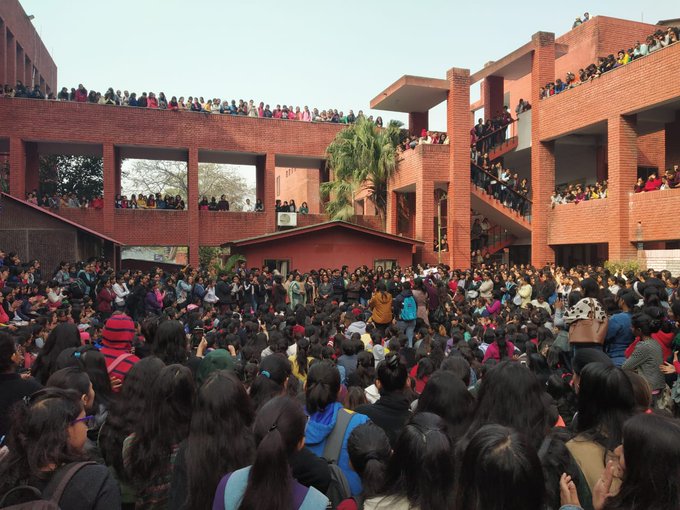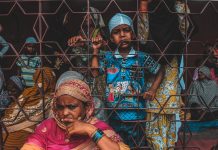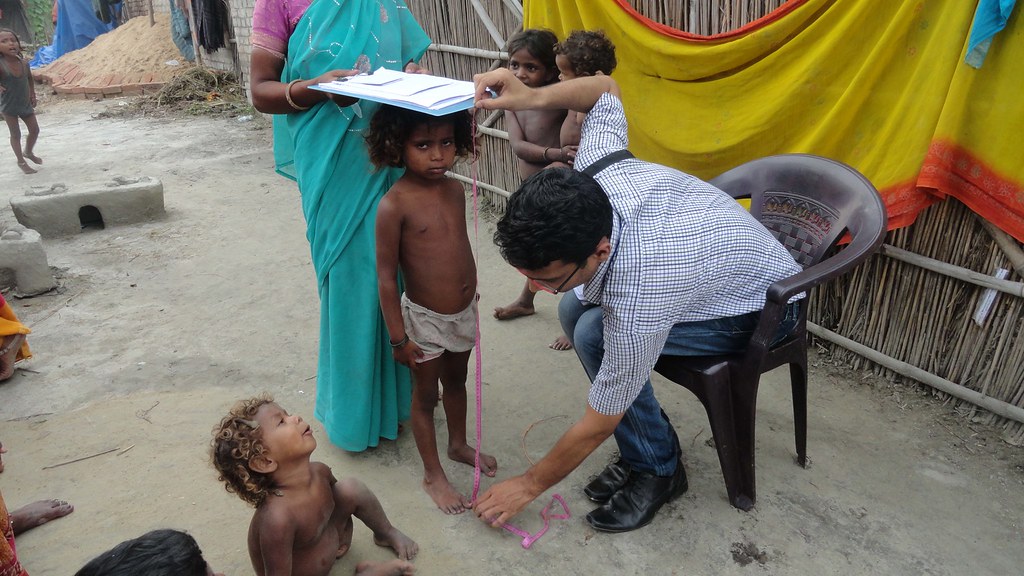
I have been living, teaching and learning inside the salubrious premises of Gargi College for decades now. To the south of my living quarters meanders the Siri Fort rubble wall protecting the forested fort of medieval Siri city. The sun rises in my east facing living room window emerging slowly through the Hauz Khas bird sanctuary. The main entry gate and the west of my residence, characterised by the busy Siri Fort Road and a tony residential colony, open into ‘modernity’. It is a context unlike most other relatively homogenous institutional spaces. Life for me on the premises is a lived experience of contrasting realities that emanate from the four directions surrounding my home; ranging from middle class metropolitan daily routine, classroom academics during the day and immersion with the forested precincts in the rest of my spare time. The unique physical location of Gargi College provides for the twin goals of educating for and in diversity.
This changed as the college closed few days before the complete lockdown pronounced on March 25. That it has been a new life since then is not just a cliché. The cessation of outer activity provoked a new search to anchor myself in an alternate universe. This lead took me into three hitherto surreal realms: one that connects a new physical environment to the inner world, realisation of class advantages inherent in online teaching that I undertook for the first time in my teaching life and the disturbing role of household labour in accumulation processes of the Indian middle class. The three sections of this article elaborate each of these surreal experiences.
A new dawn
The closure of college has harbingered new mornings. I have witnessed in the last two weeks a dawn that is not the same as that of the past decades. The college premises have always belonged to its feathered friends from 5 a.m. till 8 a.m. The bird drama unfolds every morning. It is presented by dancing peafowls, foraging kites, falcons, yellow beaked beavers, mimicking parakeets, purple sunbirds and melodious mynnahs, among others in the azure skies and the numerous living trees of Gargi College. It is not unusual to find some of the birds swooping rodents, snakes and food bites from the open grounds of the college. The curtain closes on this spectacle by 8 a.m. as the nearly 4000 human community of students, teachers and other personnel start arriving in the same space.
In a new dawn following March 25 complete lockdown the birds stay on beyond 8 a.m. They keep chirping, singing and resting till late afternoons as if waiting for the college community to arrive. They were evidently puzzled by the mysterious non-appearance of the usual denizens. In the early days of the abandoned campus, the birds sometimes called out anguished notes later in the day. With passing days they have stopped retreating spending the entire day of mirth on the newly re-claimed space.
This is a bird song that I have not heard before. It is surreal as I never imagined such an experience would come home to me, touching my inner world. It encourages silence (it is easier to be silent all day when the birds sing because you want to hear their songs), stills the mind and compels me to step back within myself. There is a quieter rhythm of knowing, experiencing and living; slowing down and recovering my connection with the premises around me, as also with everything that exists around us. That this is a new dawn is no misnomer.
Each morning initiates me into a deeper realm of consciousness, one from where my own epistemological quest gets re-defined. I become perceptive to some of the important questions which come to the mind but don’t remain centre-stage enough. Do the human inhabitants of Gargi College occupy more space than nature has intended the college’s 8 acres for? Has the unplanned expansion (the college is more than half a century old) year after year, decade after decade, policy by policy; disturbed the man-animal balance on the geographical terrain because of the ever increasing enrolment? It is also noteworthy that more flowers are growing on the plants and seem to be withering more slowly. As if the slower pace of life is followed up by the plants too. I experience the ideal of a simple life following nature that the adage: All things are connected. Whatever befalls the earth, also befalls the sons of the earth.
The still mind seeks new ways to understand this new physical world around me. This epistemic search extends to the ‘academic’ domain too. In contrast to our western counterparts it is often lamented that India lacks a fieldwork tradition. The college premises cease to remain a physical space but become the ‘field’, educating me about the ways of the natural world. I feel the need for a curriculum that develops a deeper understanding of man’s relationship with his immediate natural surroundings. I re-visit several ideas from the educational studies curriculum that I teach. They resonate in a deeper layer of consciousness now. In Tagore’s writing on education the aim of education was nothing short of the aim of life itself. He defined education as an experience of learning to be a life in harmony with all existence. Solitary walking in the college grounds and gardens made my mind think where the feet walked revealing, in my inner world something that I teach as words, that I had not yet uncovered what Tagore termed as thickness of ignorance about the earth I carry under my feet, an education from mother earth, in the subtle suggestions coming from the earth to which our feet unconsciously respond.
There is a majestic Banyan tree outside my home. Botany colleagues have mentioned its age to be almost a century. Its roots extend under the rooms of my home as I discovered few years ago while undertaking civil repair works. One of my relatives often asked me a question that confounded me: Does this tree talk to you? That it was a surreal new dawn was obvious as I experienced new threads of interconnectedness providing meaning to this question that so far merely perplexed me.
The missing classroom
If the time is 8.40 a.m. in the day I am in my classroom. It has been so for decades now. In a personal way, as an educator the daily lectures are significant moments of liberation for me. As college is ‘closed’ this is amiss. The enchantment of inter-personal interactions with the college community particularly discussions on social science themes; is a new absence. Barring the main office, bank and some sanitation workers the college is empty.
Even before I could come up with creative possibilities to reach out to students statism came up with a readymade response, mandating online teaching-learning processes. To continue with what I was teaching when the lockdown was announced I pulled out American philosopher John Dewey’s famous essay ‘My Pedagogic Creed’, an influential reading in educational studies coursework, for online teaching. I decided to follow a pedagogy of breaking up the teaching-learning process into 5 video conferencing 40 minute sessions ( the college period is 50-55 minutes though) corresponding with the five sections the essay is organised in. Each of the sections examines a question each: What is education? What is a school? What the subject matter of education is? What the nature of its method is? What is the relationship between the school and the social process? It is ironical that as I suggested that students read the essay one more time and come up with keywords to initiate an online discussion the chosen words included: social interaction, sociological learning processes and social construction of knowledge. The educational reformer Dewey believed that social processes were the basis for individual development in growing children and that school education needed to be organised around them.
In the very first online lecture I was disconcerted at the attendance of barely 17 out of 47 students of my class. Evidently many of them did not have web enabled devices. Some of them were leaving and joining the online platform possibly due to an unstable internet connection. It didn’t take me long to realise the non-inclusiveness of online pedagogy that came with a class privilege, a digital divide. The diverse social composition of higher education in India has in recent decades included the hitherto marginalised sections of our stratified society rendering classrooms more inclusive. It would be useful to conduct a simple survey in the college to investigate how many students were in a position to participate in this online exercise. Those who weren’t would fall back as much as the online learning accomplished and be doubly disadvantaged with compounding lack of access to various resources.
This was as surreal as the missing classroom. It had never occurred to me that there would be a day when classroom teaching would need substitution. That too by a pedagogy I had no training in.
Role of labour in the accumulation process
Having fulfilled professional obligation necessitated by drawing a salary from the public exchequer during the day, in the evening the free spirit comes to the fore. For me, as for many other education workers this involves independent scholarship. Reading, research and working over manuscripts is an exhaustive time consuming process. There are wider social, economic and local conditions of metropolitan middle class life that elevate this free spirit.
In our society with its graded structural inequality there is no gainsaying the answer to the question: Who does the household work and who indulges in a cerebral life with freed slices of life? In metropolitan living the city’s underclass provides a copious supply of labour. The pivotal role labour plays in the accumulation process of intellectual empowerment with this free time haunts me as I enact the non-intellectual, domestic that was before the lockdown undertaken by household workers. The missing street vendors (there are 10 million of them in Indian cities) further highlighted the threads of interdependence as I struggled to wade through essential daily requirements of vegetables and fruits. The lockdown turned them all out of sight. Policy-solutions quarantined the middle class but cannot protect the precarious livelihoods of this underclass which is a social group that lives in homes with no scope for ‘physical’ distancing. There is almost a secession of the poor from the other social hierarchies’ in our society. Oxfam reports of 2017 point out that India is not only one of the most unequal societies in the world today but also that inequality has continued to increase exponentially as 57 Indian billionaires possess as much wealth as the poorest 70 % while a whopping 270 million of our people are estimated to live in poverty. Newspaper reports indicate how the poorest among the urban seasonal migrants have no livelihood, home or means of survival and have no option but to retreat to an uncertain life of abject poverty, unemployment and misery in their native villages. As I think of their life at the end of the lockdown it is striking that the largely informal terms of employment of this underclass are further buffered by a surplus pool of unemployment. The reconciliation of this class to inequality begins with this fear of unemployment which keeps the status quo thriving. In the words of Karl Marx and Frederick Engles(1848),
All that is solid melts into air, that is sacred is profaned, and man is at last compelled to face with sober senses his real conditions of life, and his relations with his kind,
This important passage reminds me of this disturbing labour-capital dynamic, that frees my evenings, but our world is farther than ever before to his egalitarian vision, that is fading into a surreal realm in contemporary times.
Dr. Jyoti Raina teaches at the Department of Education at Gargi College/University of Delhi.













